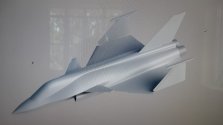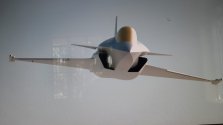You are using an out of date browser. It may not display this or other websites correctly.
You should upgrade or use an alternative browser.
You should upgrade or use an alternative browser.
Indian Military News, Reports, Data, etc.
- Thread starter bd popeye
- Start date
The Quantum Information and Computing lab (QuIC) at the Raman Research Institute (RRI) in Bengaluru has made an important breakthrough as its team members have been successful in demonstrating free space quantum key distribution between two buildings at the institute across an atmospheric free space channel.
This is India’s first reported free space quantum key distribution experiment which connects two buildings using an atmospheric channel. QuIC is leading India’s first project on satellite-based long- distance quantum communications. It will enable safe communications across strategic sectors, ranging from banking to defence.
This project was a collaboration between Professor Urbasi Sinha’s lab at the institute and Indian Space Research Organisation. It named quantum experiments using satellite technology (QuEST) with several ambitious milestones and deliverables in its journey towards ultimately establishing satellite-based secure quantum communication between two Indian ground stations, using an Indian satellite. Sinha said that this is a breakthrough milestone for the QuEST project as this will pave the way for longer distances using atmospheric channels, ultimately culminating with ground to satellite-based secure quantum communications.
The institute said that this breakthrough will be an important stepping stone towards the government’s vision of connecting up different nodes in the country through free space and fibre-based channels, towards a secure quantum communications network. Besides this is poised to revolutionise security for strategic sectors like banking, defence services, cyber security as well as for applications involving the common man, which need to be kept safe from unwanted intrusions.

This is India’s first reported free space quantum key distribution experiment which connects two buildings using an atmospheric channel. QuIC is leading India’s first project on satellite-based long- distance quantum communications. It will enable safe communications across strategic sectors, ranging from banking to defence.
This project was a collaboration between Professor Urbasi Sinha’s lab at the institute and Indian Space Research Organisation. It named quantum experiments using satellite technology (QuEST) with several ambitious milestones and deliverables in its journey towards ultimately establishing satellite-based secure quantum communication between two Indian ground stations, using an Indian satellite. Sinha said that this is a breakthrough milestone for the QuEST project as this will pave the way for longer distances using atmospheric channels, ultimately culminating with ground to satellite-based secure quantum communications.
The institute said that this breakthrough will be an important stepping stone towards the government’s vision of connecting up different nodes in the country through free space and fibre-based channels, towards a secure quantum communications network. Besides this is poised to revolutionise security for strategic sectors like banking, defence services, cyber security as well as for applications involving the common man, which need to be kept safe from unwanted intrusions.

The Quantum Information and Computing lab (QuIC) at the Raman Research Institute (RRI) in Bengaluru has made an important breakthrough as its team members have been successful in demonstrating free space quantum key distribution between two buildings at the institute across an atmospheric free space channel.
This is India’s first reported free space quantum key distribution experiment which connects two buildings using an atmospheric channel. QuIC is leading India’s first project on satellite-based long- distance quantum communications. It will enable safe communications across strategic sectors, ranging from banking to defence.
This project was a collaboration between Professor Urbasi Sinha’s lab at the institute and Indian Space Research Organisation. It named quantum experiments using satellite technology (QuEST) with several ambitious milestones and deliverables in its journey towards ultimately establishing satellite-based secure quantum communication between two Indian ground stations, using an Indian satellite. Sinha said that this is a breakthrough milestone for the QuEST project as this will pave the way for longer distances using atmospheric channels, ultimately culminating with ground to satellite-based secure quantum communications.
The institute said that this breakthrough will be an important stepping stone towards the government’s vision of connecting up different nodes in the country through free space and fibre-based channels, towards a secure quantum communications network. Besides this is poised to revolutionise security for strategic sectors like banking, defence services, cyber security as well as for applications involving the common man, which need to be kept safe from unwanted intrusions.
View attachment 69172
Stolen from China and a copy cat technology since China did the demonstrations so many years ago
Not stolen but propelled by China.Stolen from China and a copy cat technology since China did the demonstrations so many years ago
If China does something, India would like to try it too. I was reading an article about the need for Semiconductor policy and fabs in India a while ago. Same is the case for many projects (Space Defence, Military command restructuring, Aircraft Carrier buildup, need for Space Stations, Artifical Intelligence policy)
I'm waiting for India to do something like the Digital Yuan. I'm certain India will try that. It's flattering for China to have it get imitated.
Hopefully, they imitate it regarding malnutrition and eradication of poverty.
I don't think it comes down to that for a 1.3 billion country with a rapidly growing economy.If China does something, India would like to try it too.
An RFP has been issued by the DRDO for the mfg and supply of 8 MANPAD/Very Short Range Air Defence Systems (VSHORADS) units. The indigenously designed and developed missile system can strike targets at ranges of 6-7 km. The system is expected to see its devp trials in Q1 2022.
The Indian Army starts process of acquiring 556 Augmented Reality Head Mounted Display ARHMD Systems under Make-II Category. After successful evaluation of responses, Project Sanction Order has been issued on 22 Feb'21 to 6 vendors to start developing the prototype. The Augmented Reality Head Mounted Display System is conceived as capability enhancement to Land Based Air Defence Weapon Systems such as IGLA shoulder fired SAM & ZU-23mm 2B AD Gun System which will provide the operator with radar/Thermal Imaging sight outputs as overlays.
An American Australian university associate professor and ‘China expert’, everyone I present to you one of the most self serving, one-sided, and biased analysis-opinion piece... and may I add a pretty funny one if you read between the lines
Some juicy highlights and comments
Some juicy highlights and comments
How has a relatively poor country like India that is more famous for call centers than for precision manufacturing managed such a dramatic technological leap?
When ever people talk about India not copying anything or respect intellectual property, I always find it interesting how no one ever mentions Indian pharmaceutical companies and their generic drugs industry...Not only does it have one of the world’s largest military procurement budgets and a large pool of talented engineers, but India also has a strong tradition of rule of law that protects intellectual property and ensures the enforceability of contracts
I find this a rather amusing point... as unlike all other areas military technology is one of those you really don’t want to rely too much on others unless your country is ok being under the foot of others... the Chinese have been on their own and has achieved their own successes while suffering some failures but still on a whole successful in their endeavours and Pakistan used as a comparison is just wrong, since Pakistan relative to India is still a poor country and yet has been able to be on a relatively same footing as India when fighter jets are concerned, actually assembling and developing iterations when India’s own was basically in limbo, that’s just embarrassing for IndiaFor India, that’s not a problem: As a democratic country that honors contracts and respects intellectual property law, it is able to buy advanced technology that it cannot produce itself. That gives the country a major advantage over its regional rivals, China and Pakistan, which simply are not trusted by their suppliers. China’s jet fighter development programs have been repeatedly held back by Russia’s to supply high-performance engines for fear of Chinese reverse-engineering. And key components of Pakistan’s locally manufactured JF-17 are entirely sourced , as is the design.
Well sure when you are the biggest buyer why not, hell if China has any chance to be a supplier they probably would also offer assistance too... assistances isn’t free they make money from these ‘assistance’ why would they not do it and because India ‘respect’ intellectual property, iterations would probably also involve some form of royalty or license fee... whereas the Chinese would take the project as base and develop their own iterations and be self-reliant in the long run...India, in contrast to both China and Pakistan, was spoiled for its ability to choose where it received advanced components for its Tejas fighter. When it ran into trouble developing its own homegrown Kaveri engine for the plane, it received of assistance from Russian, French, and British firms, in addition to the United States’ General Electric. It was the same with avionics: French and Swedish suppliers were that they lost the contracts for radar and electronic warfare equipment to Israel. Everyone seems to want in on the Indian market, and that gives India enormous leverage over suppliers to acquire the best equipment in the world—at the best prices.
So the Indians are doing exactly what China was doing... tech transfer... only difference is the Chinese learnt and made it their own... of course no one is keen to sell to China... the Chinese is reaching parity any more help would basically mean top of the line systems which would in turn give the Chinese the edge... and local production with India’s ‘respect for intellectual property’ just means they will be making money on systems that wouldn’t be top of the line, by the time the production line is up and running or to capacity, in the long run anyway so why not...And under the best terms for technology transfer too. These days, no one is keen to help China continue its climb up the military technology ladder. But the United States, Russia, Israel, and multiple European Union countries are falling over themselves to establish local production partnerships for armaments in India. France, having lost out on the Tejas engine and avionics contracts, has agreed to establish local for the Panther helicopters and Rafale jet fighters that it is supplying to the Indian Armed Forces. U.S. aerospace majors and also have joint production agreements with Indian partners.
As if...India is not a Western ally
How about waiting for what comes out of the production lines before thinking exports... Russian fighters flies pretty well in Russia when produced and maintained by Russians but seems to have problems everywhere when India is producing and maintaining them... I am sure Lockheed or others don’t want their plane to be known to fall out of the sky... seems foreign companies pitching their wares to India is the important thing...The wanted is foreign companies manufacturing in India not just for India’s needs but for export as well. The Tejas fighter is at the forefront of that effort and indeed, the Aero India air show is primarily intended as a showcase for potential Indian exports even if in practice, foreign companies use it as an opportunity to pitch their wares to India. This year, Aero India’s organizers were so proud of the Tejas that they painted it into the show’s very . India didn’t book any export orders at the show, but it is exploring such deals throughout the Indian Ocean region.
It’s all well and good until the US puts the ban hammer on exports thanks to their involvement or ‘assistance’ in your ‘indigenous’ fighter... further what good will the airframe do when the munitions are strictly controlled, expensive and will have to go through other hoops and red tape to get...The Tejas Mark 1A, which has just entered mass production, is being offered for export at a of approximately $43 million per aircraft, much less than the of a new F-16, the U.S. export standard. That’s still more expensive than the Chinese competition, but the Tejas is widely perceived to be a more reliable, higher-performance aircraft than anything offered by Beijing. Unlike Chinese jets, the Tejas can boast tried-and-tested components that meet international standards, many of them being of international origin. No one will worry about flying a jet with a General Electric engine that has powered U.S. and European aircraft for four decades. They might think twice about one with a discount Russian engine in China.
Funny... so the foreign companies want India to produce ‘high-end’ weapons cheaply that would most likely be competing with future indigenous Indian weapons that I am sure India themselves want to be able to sell... basically both hampering self reliance, in the long run, and potential future markets at the same time, since these foreign ‘high-end’ weapons licenses will still be owned by foreign companies and since they are being produced cheaply they will be competing with India’s own development on India’s own procurement orders, therefore potentially killing two birds with one stone... what a move that would be!These export contracts are small potatoes. The big prize will be for India to become a low-cost manufacturing hub for high-end weapons systems. That could mean foreign companies use India as an assembly base or Indian companies export their own products, such as the Tejas fighter. For India, either business model would mark a big step forward. China may be the workshop of the world when it comes to vacuum cleaners or mobile phones, but no non-Chinese company is ever going to offshore its defense production networks to China. India shows that, at least when it comes to sensitive industries like defense, democracy and the rule of law do matter.
Last edited:





